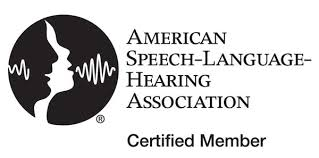Phonological Processes:
The Essentials
What Are They?
Typical patterns of error used by all children when they try to imitate adults as they are developing speech.
What is a Phonological Disorder?
When a child uses incorrect speech patterns by making errors on sound patterns or sound blends. (see typical phon. processes chart below)
What Causes It?
Correct speech becomes easier as a child's tongue and motor skills mature and gain experience.
Sometimes a child holds onto these "baby" or "immature" patterns of speech simply because they are not aware that they are saying sounds wrong.
If a child continues to use these processes, the result is a developmental phonological disorder.
One of the most common types is a pattern known as "velar fronting" or "fronting" for short.
This happens when a child says a sound in the front of their mouth that should be made in the back. Typically...
/k/ is replaced with /t/
- /cup/ is pronounced /tup/
- /pack/ is pronounced /pat/
and...
/g/ is replaced with /d/
- /go/ is pronounced /doh/
- /beg/ is pronounced /bed/
...these examples show that phonological processes can happen at the beginning and ends of words but there are many more variations to this disorder.
SEE ALSO: Crush Therapy Goals with the All in One Printable Flashcards
SEE ALSO: 6 Phonological Process Activities for Speech Therapy
When our oldest daughter was about 22 months old, she replaced some front sounds with back sounds.
Sometimes she would say "bike" when she was really asking for a "bite" of food. This is called backing.
Fortunately for her, her mom and dad are Speech Pathologists so we knew it was O.K. at the time...
...but we monitored it until she grew out of it.
This chart can help you keep an eye on your child's speech if you suspect they are using phonological processes.
You can download a free copy of this chart below, simply click the text or image below.
If you know someone who could benefit from the Phonological Processes chart, please share it this page by using the buttons you see on the screen. Thank you.
Click the Image Below to Download
Your Free Copy of the Phonological Processes Chart
Typical Phonological Process Development
Substitution Processes - when one class of sounds is replaced for another class of sounds.
Stopping (Stop) - When a child substitutes a stop (b, p, d, t, g, k) for a fricative (s, z, f, v, th's, h, sh,and zh as in measure).
Examples
/pat/ for fat
/pine/ for vine
/tear/ for share
/dob/ for job
/take/ for shake
/tope/ for soap
/pum/ for thumb
Gone by Age
3 yrs.
3 1/2 yrs.
4 1/2 yrs.
4 1/2 yrs.
4 1/2 yrs.
3 yrs.
5 yrs.
Deaffrication - When a child replaces an affricate (ch, dz as in judge) with a stop (b, p, d, t, g, k) or a fricative (s, z, f, v, th's, h, sh, and zh as in measure).
Examples/tear/ for chair /sop/ for chop /karm/ for charm /dob/ for job /dim/ for gym /zan/ for Jan |
Gone by Age4 yrs. |
Velar Fronting (VF) - When a child replaces a velar sound (k, g, ng) with a sound that is made toward the front of the mouth.
Fronting usually happens more often in the beginning of words compared to the end.
Examples
/top/ for cop
/reen/ for ring
/tup/ for cup
/doh/ for go
/tum/ for gum
Gone by Age
3 1/2 yrs.
3 1/2 yrs.
3 1/2 yrs.
3 1/2 yrs.
3 1/2 yrs.
Depalatalization (Dep) - When a child substitutes an alveolar fricative (s, z) for a palatal fricative (sh, and zh as in measure).
Examples
/tek/ for check
/matsiz/ for matches
/dudz/ for judge
/dane/ for Jane
Gone by Age
5 yrs.
Backing - When a child substitutes a front sound (t, d) with a back sound (k, g).
Examples
/kop/ for top
/hope/ for soap
/gime/ for dime
/bike/ for bite
Gone by Age
*This occurs in children with severe phonological disorders.
Liquid Gliding (LG) - When a child substitutes a glide sound (w, y) for a liquid sound (r, l).
This can also occur in consonant clusters.
Examples
/wabbit/ for rabbit
/wook/ for look
/wing/ for ring
/yeef/ for leaf
/bwed/ for bread
/gween/ for green
/bwack/ for black
/gwas/ for glass
Gone by Age
5 yrs.
5 yrs.
5 yrs.
5 yrs.
Vocalization (Voc) - This is also known as vowelization and happens when a child substitutes a vowel for a syllabic liquid.
Examples
/simpo/ for simple
/abuh/ for able
/tabo/ for table
/papo/ for paper
Gone by Age
Not Available
Syllable Structure Processes - sound changes that modify the syllablic structure of words
Unstressed Syllable Deletion (USD) - When a child doesn't say the syllable with the least amount of stress.
Examples
/medo/ for tomato
/tefon/ for telephone
/efant/ for elephant
/nana/ for banana
/side/ for outside
Gone by Age
4 yrs.
4 yrs.
4 yrs.
4 yrs.
4 yrs.
Reduplication (Redup) - When a child repeats a syllable of a target word which creates a multi-syllabic word form.
Reduplication can be Total or Partial.
Examples
Total
/baba/ for bottle
/dada/ for dog
/tata/ for television
Gone by Age
2 1/2 yrs.
2 1/2 yrs.
2 1/2 yrs.
Partial
/bada/ for bottle
/dadi/ for dog
/tatu/ for television
Gone by Age
2 1/2 yrs.
2 1/2 yrs.
2 1/2 yrs.
Dimunization (Dim) - When a child adds an "-ee" and sometimes a consonant + "-ee" to a target word.
Examples
/cup-ee/ for cup
/book-ee/ for book
/doll-ee/ for doll
Gone by Age
Not Available
Epenthesis - When a child says an unstressed vowel usually "uh" between two consonants.
Examples
/suh-poon/ for spoon
/cup-uh/ for cup
/puh-late/ for plate
Gone by Age
Not Available
Final-Consonant Deletion (FCD) - When a child leaves a single consonant or consonant cluster off of the end of a word.
This can happen on words that end with a vowel (open-syllable word) or on words that end in consonants (closed-syllable word).
Examples
Open
/ma/ for mom
/da/ for dog
/wag-ih/ for wagon
Gone by Age
3 yrs. 3 mos.
3 yrs. 3 mos.
3 yrs. 3 mos.
Closed
/boo/ for books
/ha/ for hand
Gone by Age
3 yrs. 3 mos.
3 yrs. 3 mos.
Initial Consonant Deletion (ICD) - When a child does not say the first single consonant or consonant cluster at the beginning of a word.
*This is more uncommon but can occur in children with severe phonological disorders.
Examples
/own/ for phone
/ah-zit/ for closet
/oo/ for shoe
/indo/ for window
/op/ for stop
Gone by Age
Not Available
Cluster Reduction/Deletion (CR) or Cluster Substitution - When a child deletes or substitutes some or all parts of a cluster.
Cluster deletion can be Total or Partial.
Examples
Total
/op/ for stop
/eight/ for straight
/da/ for dark
Gone by Age
All Cluster Reduction and Substitution should be gone by 3 1/2 yrs.
Partial
/top/ for stop
/tate/ for straight
/dak/ for dark
Gone by Age
All Cluster Reduction and Substitution should be gone by 3 1/2 yrs.
Cluster Substitution
/bwed/ for bread
/pwace/ for place
Gone by Age
All Cluster Reduction and Substitution should be gone by 3 1/2 yrs.
Assimilation Processes - one sound changes to become more like another sound, usually its neighboring sound.
Labial Assimilation - When a sound is changed to a labial sound (b, p, m, w) because of another labial sound in a word.
Labial Assimilation can be Total or Partial.
Examples
/wap/ for wax
/peb/ for pen
/mob/ for moss
Gone by Age
3 yrs.
Total
/bub/ for bug
Gone by Age
3 yrs.
Partial
/bup/ for bug
Gone by Age
3 yrs.
Velar Assimilation - When a non-velar sound is changed to a velar (k, g, ng) sound.
Velar Assimilation can be Total or Partial.
Examples
/kug/ for cup
/keek/ for keep
/goag/ for goat
Gone by Age
3 yrs.
Total
/kuck/ for cup
Gone by Age
3 yrs.
Partial
/kug/ for cup
Gone by Age
3 yrs.
Nasal Assimilation - When a non-nasal sound is changed to a nasal (m, n, ng) because of the influence of another nasal sound in the word.
Nasal Assimilation can be Total or Partial.
Examples
/mom/ for mop
/nong/ for long
/non/ for nose
Gone by Age
3 yrs.
Total
/mom/ for mop
Gone by Age
3 yrs.
Partial
/mon/ for mop
Gone by Age
3 yrs.
Alveolar Assimilation - When a non-alveolar sound is changed to an alveolar sound (t, d, n, l, s, z).
Nasal Assimilation can be Total or Partial.
Examples
/tot/ for toss
/suit/ for soup
/dod/ for door
Gone by Age
3 yrs.
Total
/tot/ for top
Gone by Age
3 yrs.
Partial
/tod/ for top
Gone by Age
3 yrs.
Prevocalic Voicing - When a voiceless sound that comes before a vowel is changed to a voiced sound.
Examples
/den/ for ten
/zuit/ for suit
/vight/ for fight
/bie/ for pie
Gone by Age
6 yrs.
Postvocalic Devoicing - When a voiced stop, fricative, or affricate, that follows a vowel is changed to a voiceless sound (devoiced).
Examples
/pick/ for pig
/tuck/ for tug
/sat/ for sad
/bis/ for bees
Gone by Age
3 yrs.
Adapted from:
Pena-Brooks, Adriana, & Hegde, M.N. (2000). Assessment and treatment of articulation and phonological disorders in children. Austin, TX, U.S.A.: PRO-ED, Inc.
SEE ALSO: The Best Free App for Speech Therapy
All of these patterns should be gone by age 5.
If your child uses one of these phonological processes and they don't have any other speech problems, I would wait until they are just past the age that the pattern should be gone before talking with an SLP.
Why you ask? Because an SLP may not be able to qualify your child for therapy services until he/she is considered to be delayed for his/her age.
However, if your child has or had additional speech errors, developmental delays, or a family history of speech problems...
...it might not hurt to talk with an SLP sooner.
What Does It Affect?
If your child uses phonological processes it can affect their:
- spelling
- writing
- reading
- phonological awareness
- communication with others
What Does an SLP Do to Help?
Speech-Language Pathologists use different techniques while working with children who use phonological processes.
Along with normal drill during therapy, another technique is called auditory bombardment.
This is a technical phrase for "having a child listen to many words with the target sound in the same place."
- Example: If the child was changing a /k/ sound to a /t/ sound
(fronting), the clinician would talk into a small amplification device while the child was wearing headphones that were hooked to the device and say:
cat car can cane cow key coat cap
kite cup comb king cave cage kiss cast
As an SLP I would read over these words at least 2-3 times at the beginning and end of each therapy session.
At home you can do it more than this if you choose but I wouldn't recommend it for longer than 5 minutes because...
...if it gets too boring your child will never want to do it.
I would also suggest having simple pictures to go with each word.
They can be real photos or cartoons. If your child is in therapy, ask the SLP for a copy of pictures with words your child is working on.
If your child is not in therapy, our site offers free word lists that target specific sounds.
You might also like:
What Can I Do About It?
The best thing you can do if you hear your child use phonological processes is model the correct speech sounds for them.
Repeat the sounds they said incorrectly and emphasize the correct pronunciation.
- Example:
Child says: "Look a doddy" (Look a doggy)
Parent says: "Where's the dog?", "He looks like a nice dog", "Come here, doggy"
2-3 repetitions is sufficient making sure to emphasize the /g/ sound each time the word "dog" is said.
You can do auditory bombardment even if you don't have an amplification device and if you know what sounds to target.
You can buy an amplification device if you want to use one.
Giving your child multiple chances to hear how letters and word blends sound is very important in helping them overcome phonological processes.
You might also be interested in our Top 10 Tips to improve communication at home.
Back to top of Phonological Processes
Special Deals and Activities, Oh My!
Sign up for Terrific Therapy Emails
Your information is 100% private & never shared.































